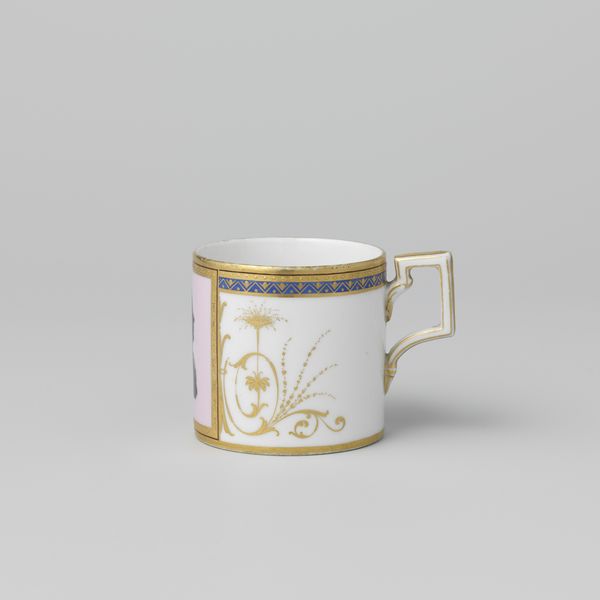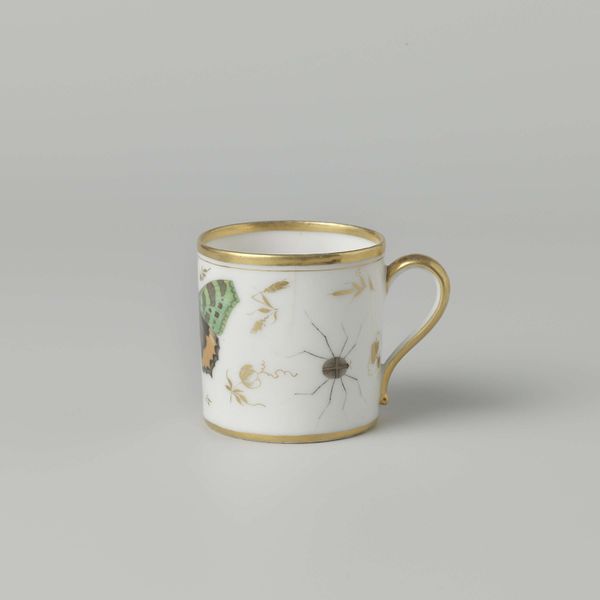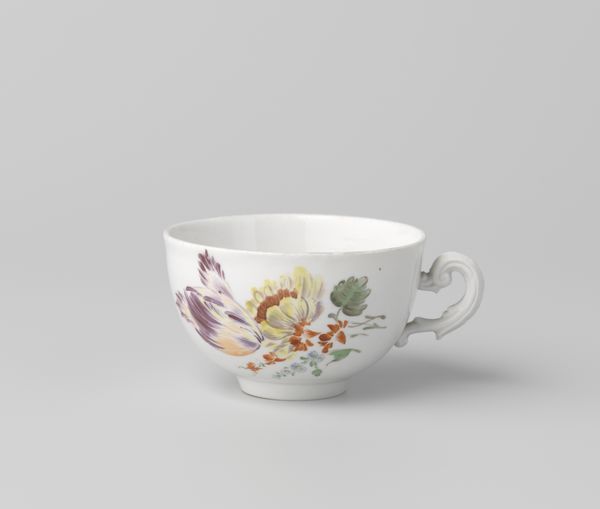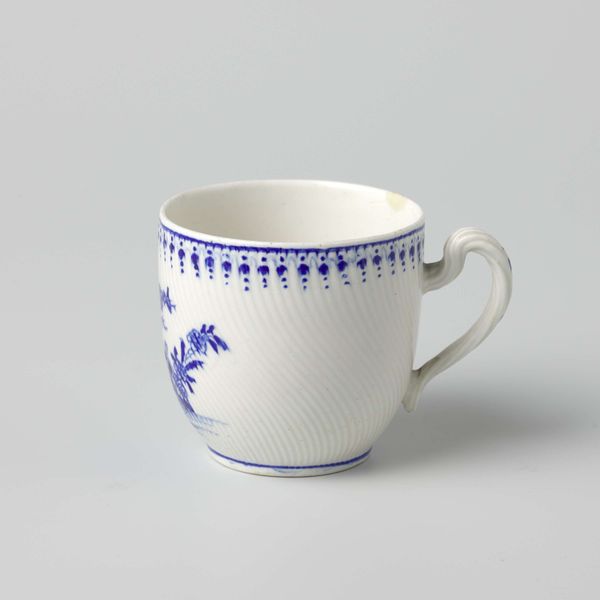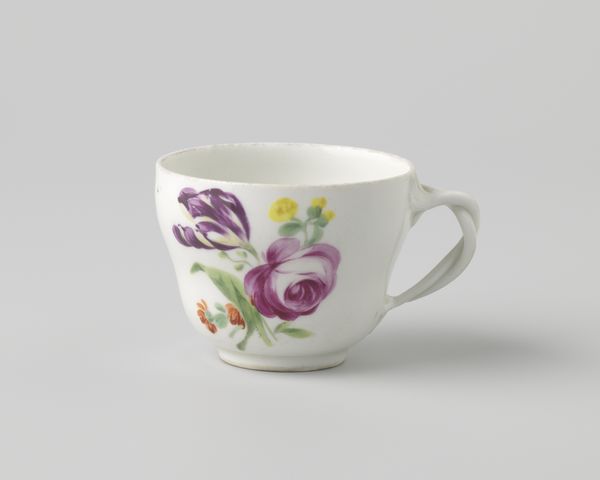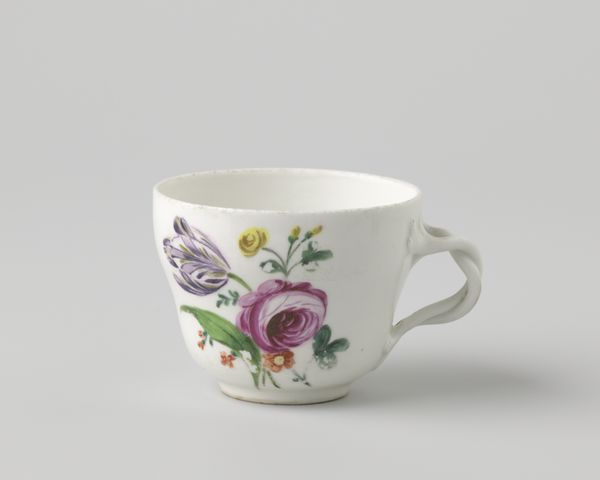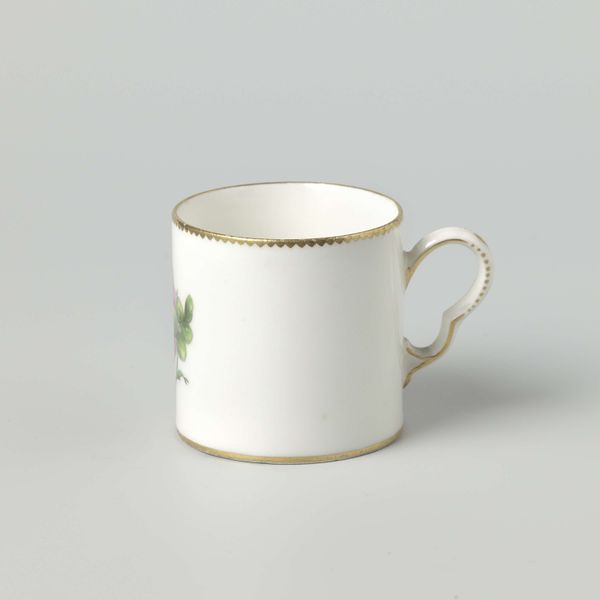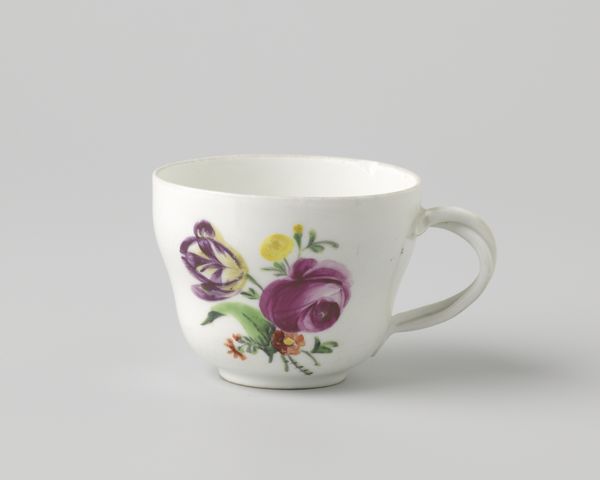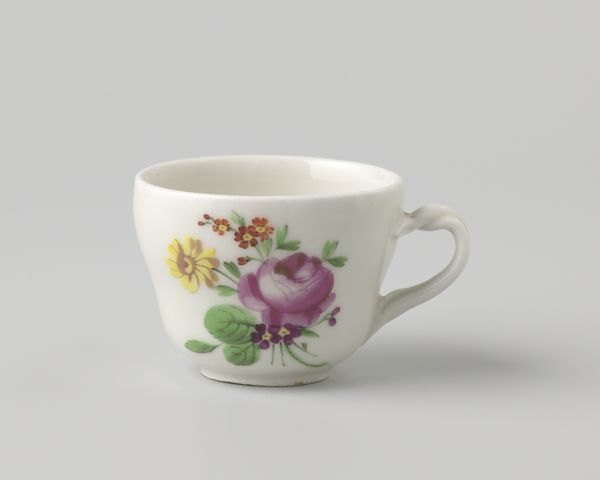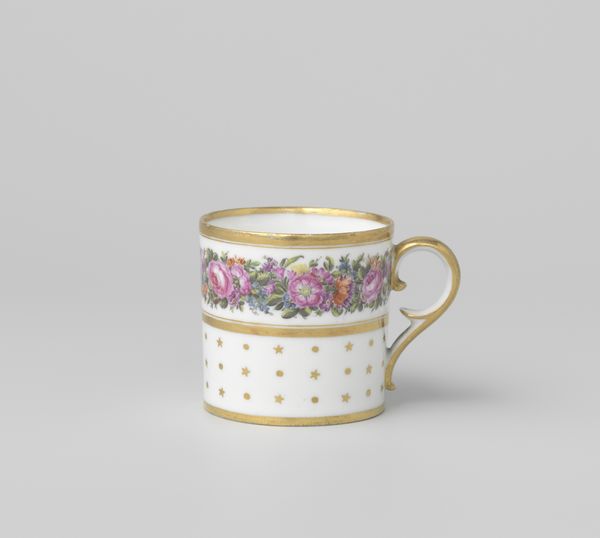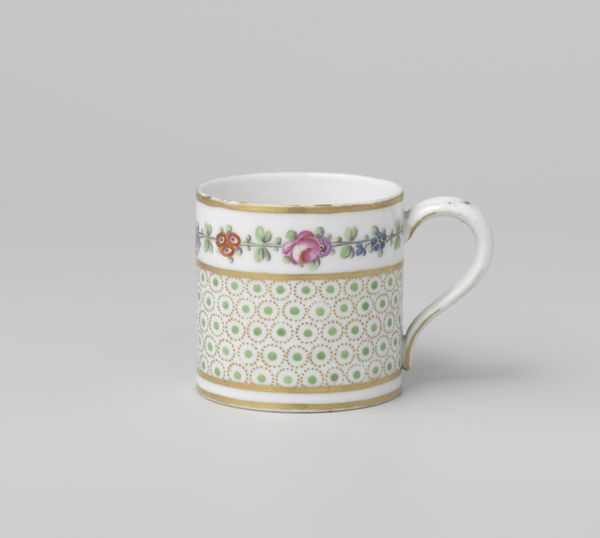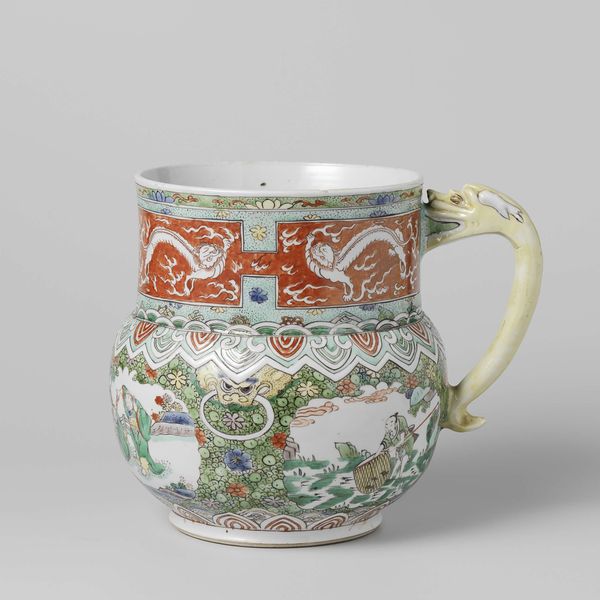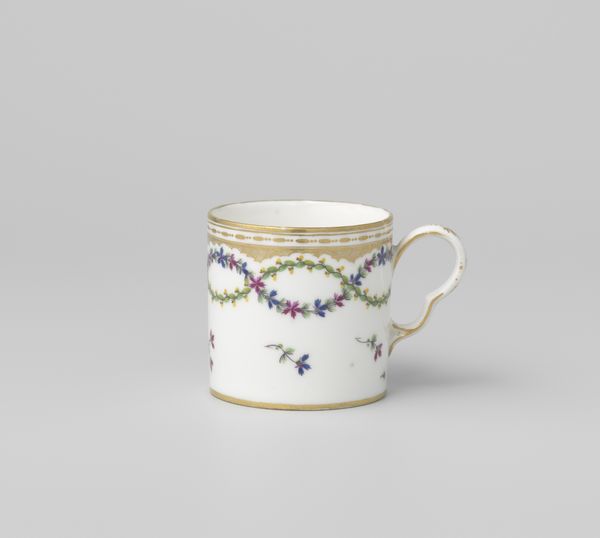
kop, beschilderd met bloemen op een fond van gearceerde driehoeken c. 1910
0:00
0:00
drawing, ceramic
#
drawing
#
art-nouveau
#
ceramic
#
decorative-art
Dimensions: height 6.2 cm, diameter 6.0 cm
Copyright: Rijks Museum: Open Domain
Editor: Here we have a ceramic cup from the N.V. Plateelbakkerij Zuid-Holland, around 1910. It's painted with flowers against this fascinating background of hatched triangles. It feels very much of its time, doesn't it? Very decorative. What’s your take on this piece? Curator: Well, it speaks volumes about the cultural embrace of Art Nouveau around the turn of the century. Notice how the flowers are stylized, not realistically rendered. This reflects a wider trend of rejecting industrial mass-production in favor of handcrafted, unique items. Who was this cup intended for? Editor: Presumably for everyday use by someone who appreciated that style? Curator: Perhaps, but it's important to consider the burgeoning middle class at this time. Art Nouveau, despite its ideals, became a status symbol. Owning objects like this cup signified good taste and access to a specific cultural sphere. Notice also the choice of flowers. What do they suggest to you? Editor: Maybe a connection to nature, a rejection of urban life? Curator: Precisely. There’s often an underlying critique of industrial society present in Art Nouveau works. It’s worth asking how this seemingly innocuous cup engages with those debates about modernity. Is it revolutionary or conforming? Editor: So, it’s more than just a pretty cup! Thinking about its original context really opens it up. Curator: Exactly! These objects aren’t just beautiful; they actively participate in shaping cultural values and social identities. Examining the “politics of imagery” truly highlights the layers in such a piece. Editor: That's fascinating; I'll never look at decorative art quite the same way again.
Comments
No comments
Be the first to comment and join the conversation on the ultimate creative platform.
